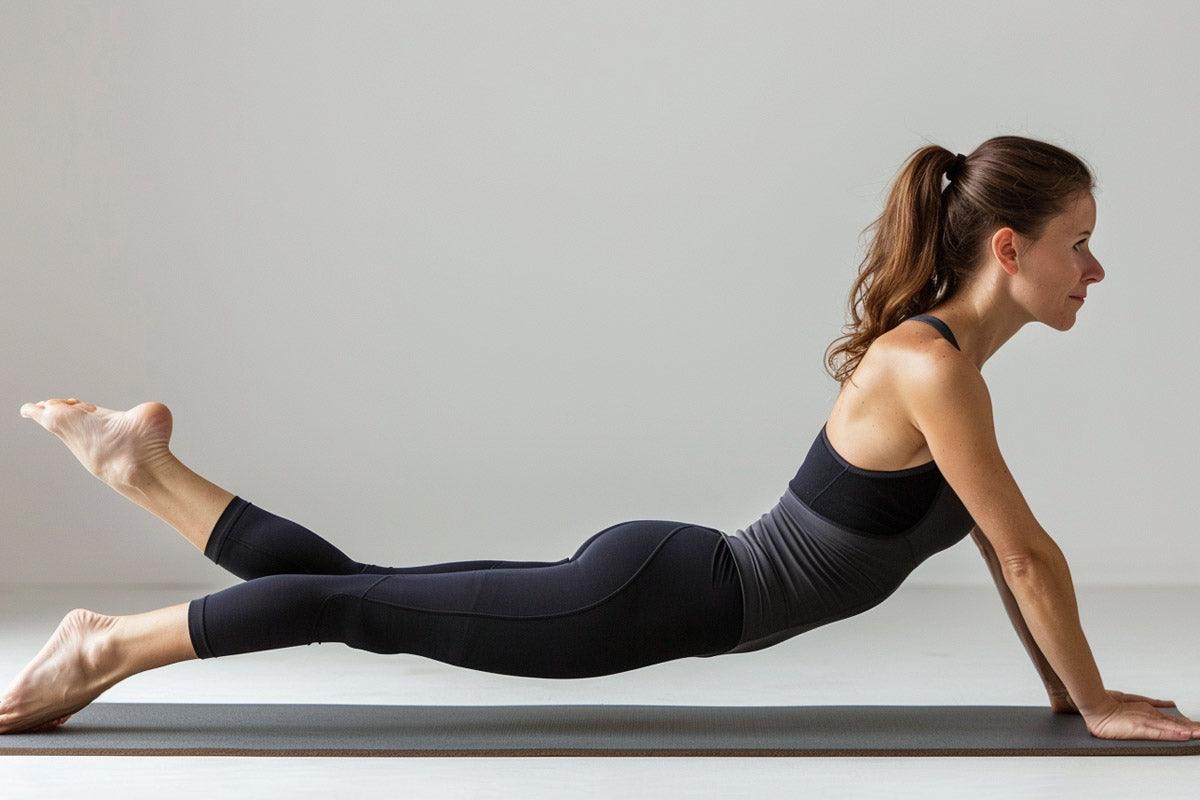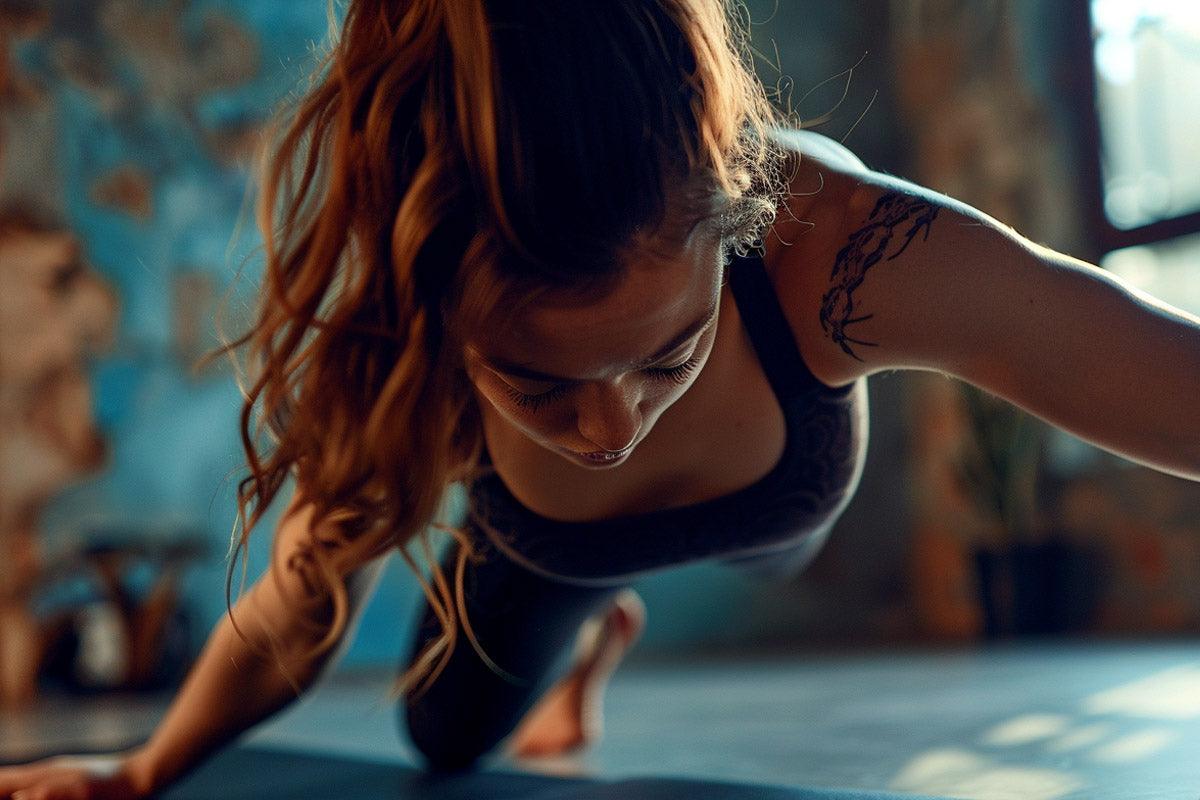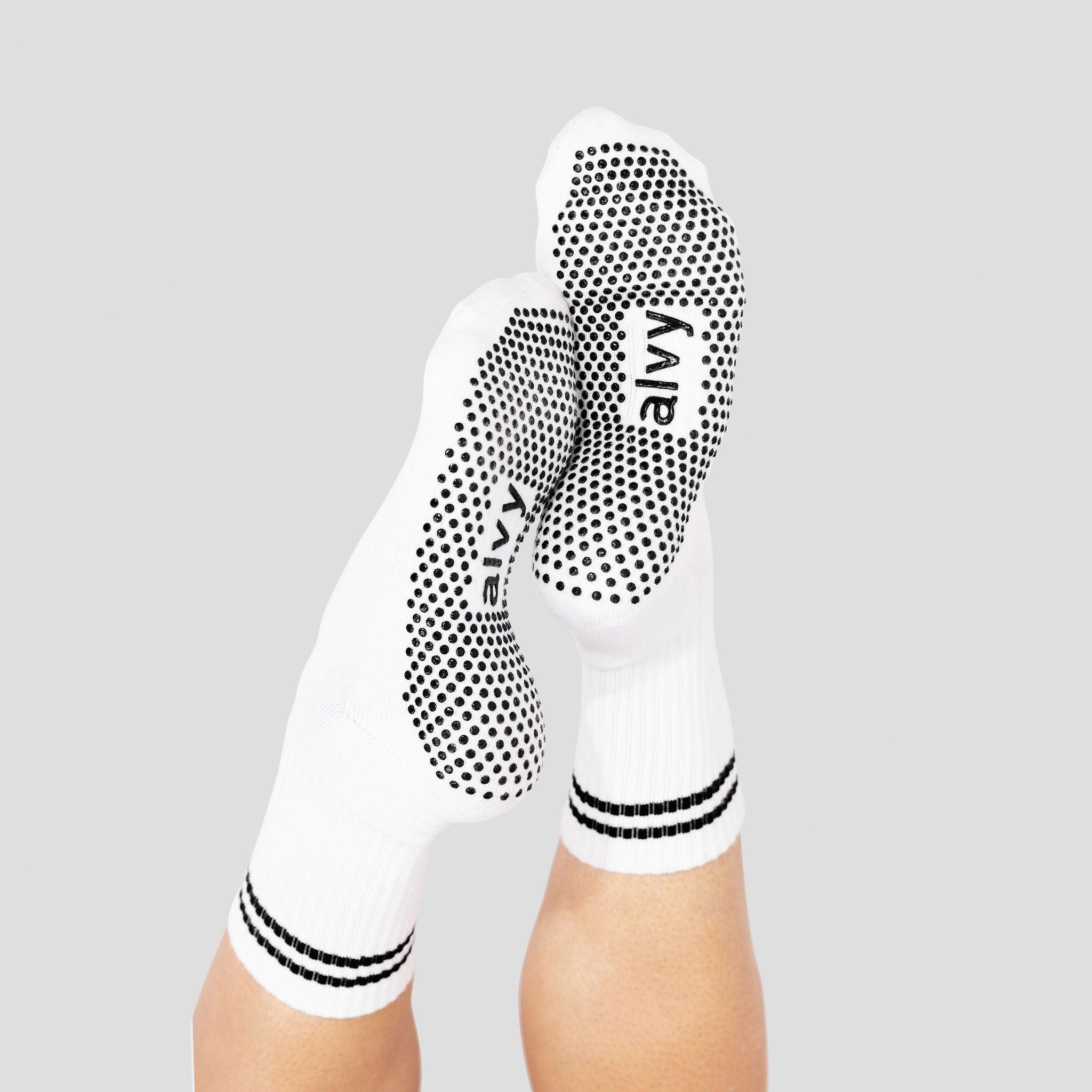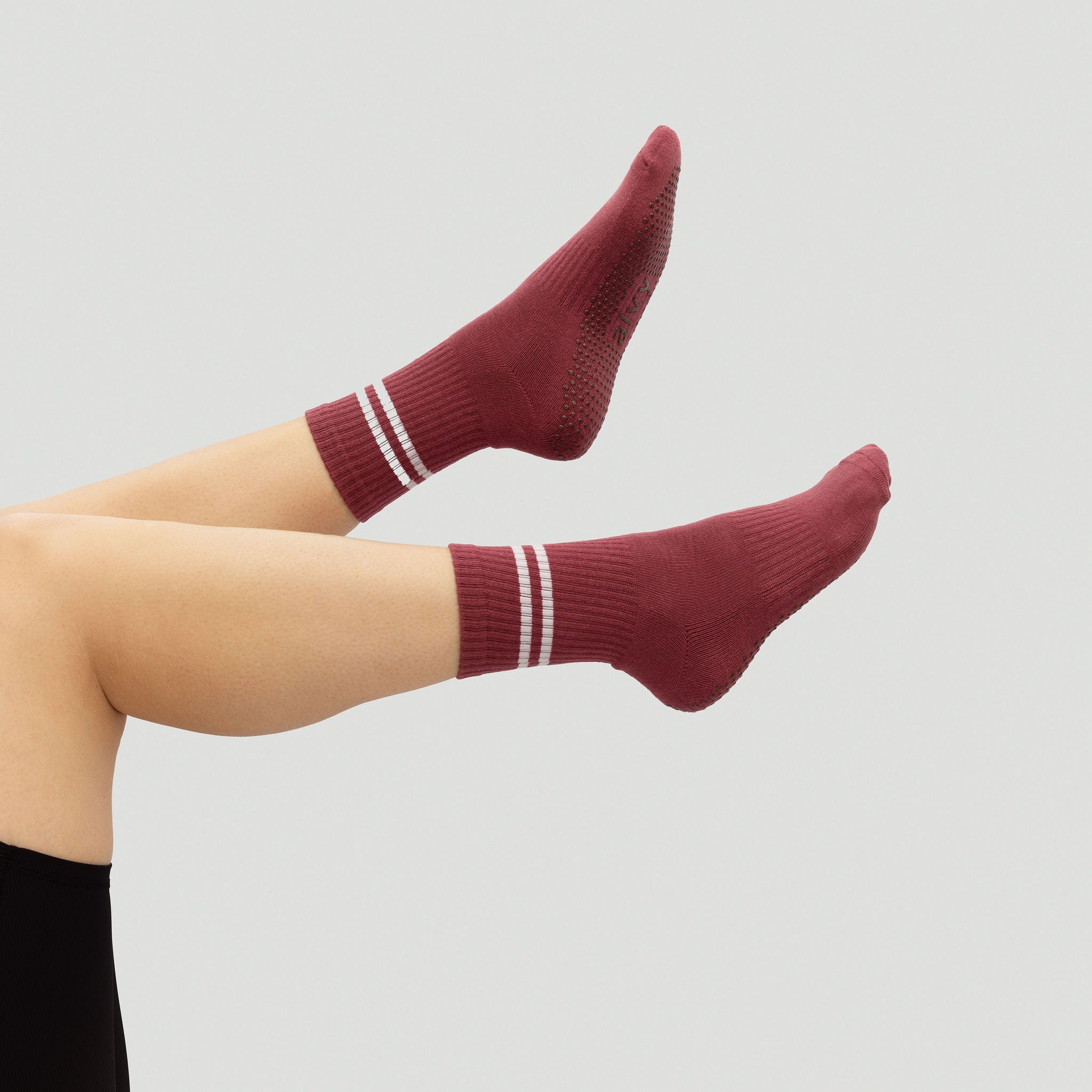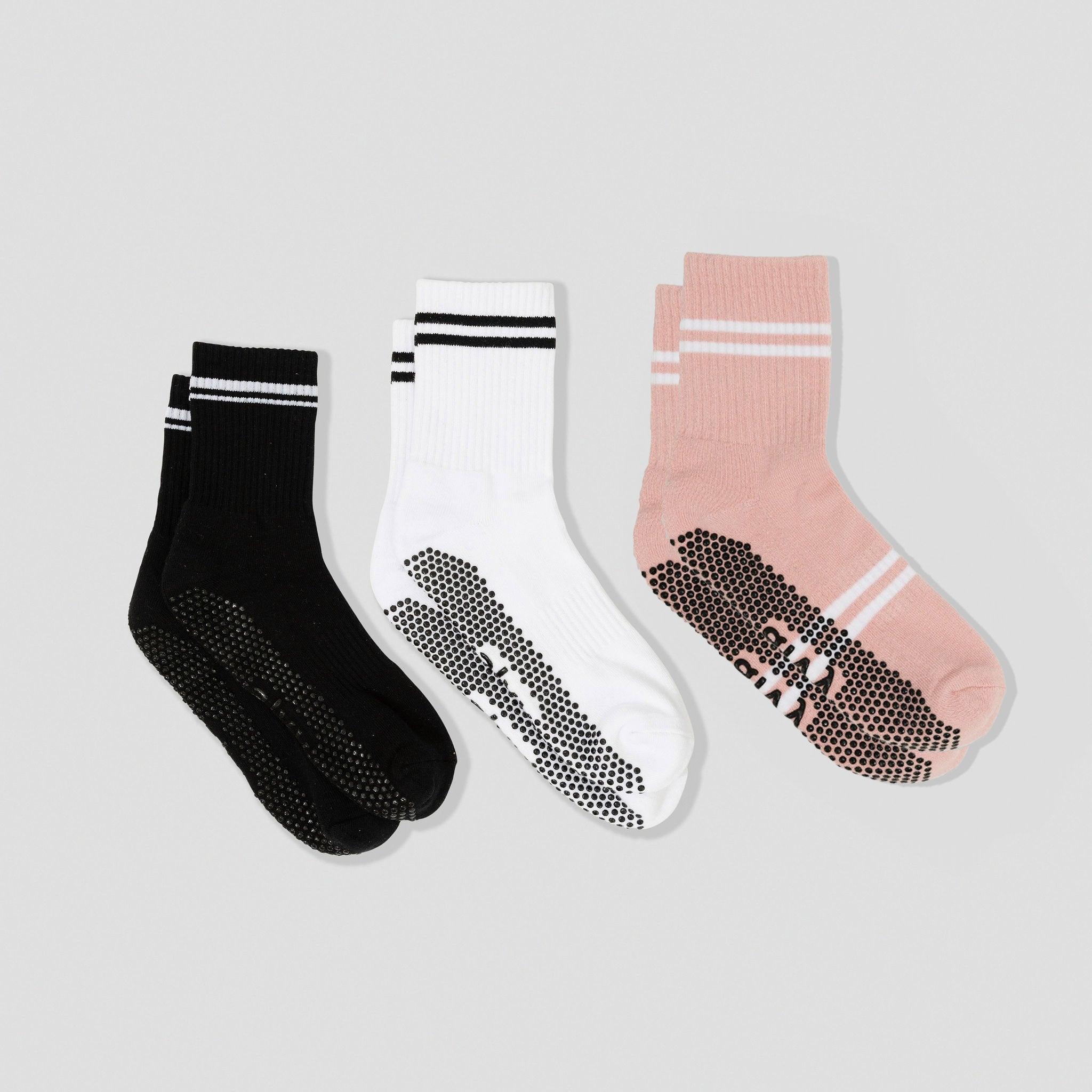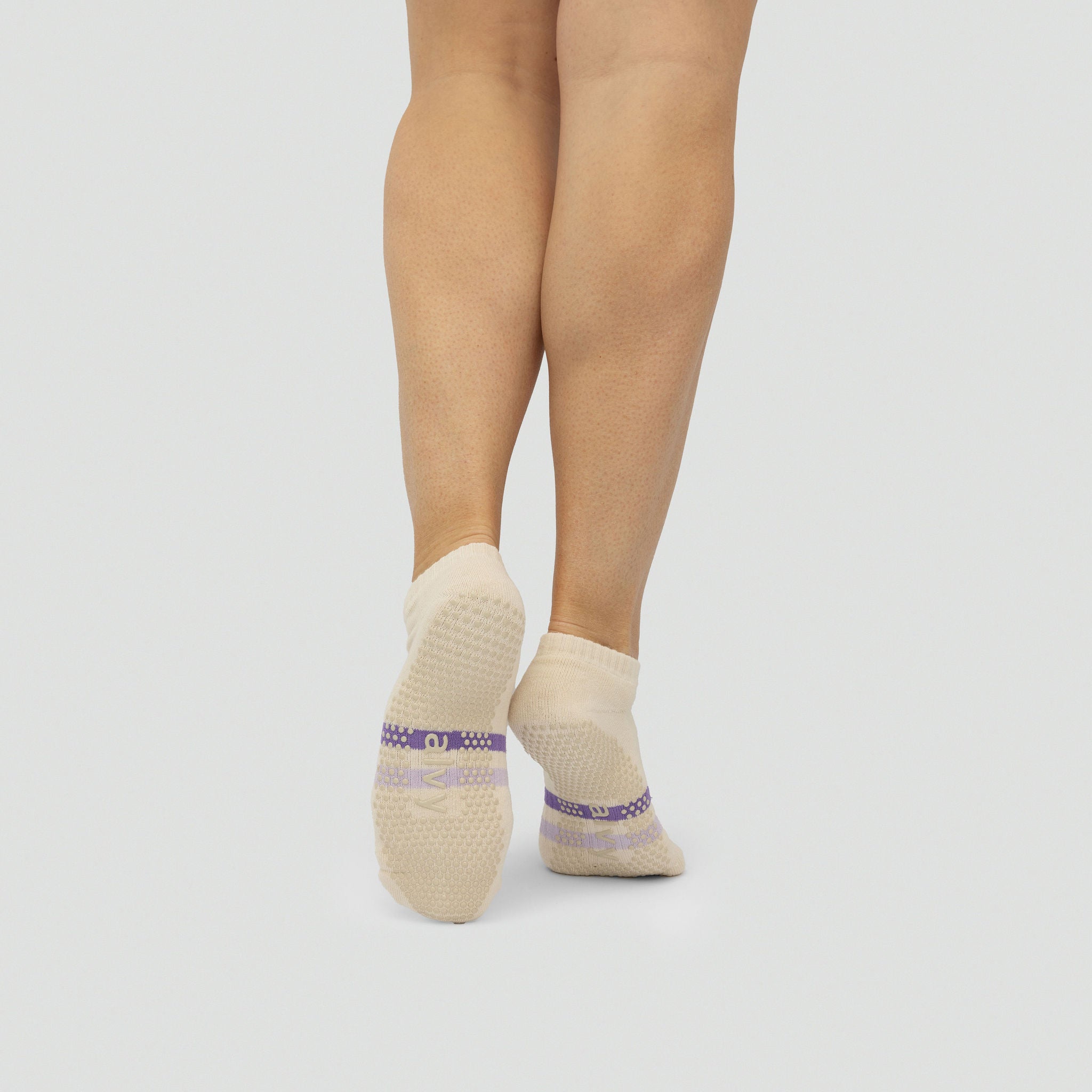Wall Pilates is a type of Pilate you might not have heard about. If you have difficulties doing mat or reformer Pilates due to injury or a physiological issue, read on to see how you can keep on keeping on.
What is Wall Pilates?
As the name suggests, wall Pilates incorporates the core principles of traditional Pilates but introduces a vertical aspect rather than carrying out exercises on a mat or using a specialised reformer machine. Using the wall for support, resistance, and alignment, wall Pilates offers a distinct approach to activating your muscles and pushing your body.
To illustrate, imagine performing a plank with your hands pressing against the wall rather than the floor or executing squats with your back gliding up and down against the wall.
The Appeal and Popularity of Wall Pilates
So, why is wall Pilates gaining traction among fitness enthusiasts? There are a few reasons:
- You can do it anywhere. All you need is a wall and free space, making performing at home or in a gym simple. You don’t need to buy Pilates accessories either.
- It’s versatile. Since no special equipment is needed, it is adaptable for all fitness levels, from novices to experienced practitioners.
- More challenge, sometimes. The wall introduces a component of resistance and assistance that can elevate traditional Pilates routines, rendering them more demanding and supportive.
The Benefits of Wall Pilates
Improved flexibility and mobility
Using the wall as a reference can assist you in reaching deeper stretches and keeping correct posture, leading to improved flexibility and joint mobility in the long run. This is especially advantageous for individuals experiencing stiffness or aiming to enhance their range of motion.
Enhanced core strength
A strong core is essential for any Pilates session, which also remains true for Wall Pilates. When using the wall for support, engaging your core in different positions can effectively target and strengthen your abdominal muscles. Consider it a core workout coupled with a stabilizer.
Better posture and alignment
One notable advantage of Wall Pilates is its emphasis on correct alignment. The wall acts as a consistent point of reference to assist you in sustaining proper posture while performing exercises. This can be particularly beneficial for individuals dealing with back pain or maintaining poor posture due to extended periods of sitting at a desk.
Increased muscle tone
Wall Pilates involves different movements that activate several muscle groups. When you do squats, leg lifts, or wall planks, you're engaging your muscles in a thorough manner that encourages muscle tone and definition. The outcome? A more sculpted, leaner physique.
Low-impact on joints
Wall Pilates is an excellent choice for individuals with joint problems or seeking a gentle workout. The workouts are gentle on the body, making them suitable for people of all fitness levels and ages, including those recuperating from injuries. This form of exercise is low-impact, so it doesn't stress the joints excessively.
Stress relief and mental wellness
There’s something inherently calming about Pilates. Controlled movements and focused breathing can help reduce stress and improve mental clarity. Wall Pilates encourages you to be present and mindful, offering a great way to unwind and reconnect with your body.
Essential Equipment and Setup
One of the advantages of Wall Pilates is its minimal equipment requirement. You only require a solid wall and some space to move. Supplementing with a yoga mat can offer cushioning during floor exercises and it's best to wear comfortable, well-fitting attire for easy movement and proper form maintenance. A good pair of Pilates grip socks will be useful.
Examples of Basic Wall Pilates Exercises
Here are a few basic exercises to give you a taste of Wall Pilates:
- Wall Squats: Akin to a normal squat, with your back against the wall and your feet shoulder-width apart. Slide down the wall into a squat position, ensuring that your back remains pressed against the wall and your knees are aligned over your ankles. The key part is to maintain a straight back against the wall.
- Wall Planks: Position your hands on the wall at shoulder height and step your feet back to form a plank position. Engage your core and maintain this pose. This variation of the traditional plank exercises your upper body and core muscles.
- Leg Lifts: Lie on your side with your back against the wall. Lift your top leg while keeping it straight and engaging your core to do the work.
Comparing Wall Pilates to Traditional Pilates
Wall Pilates and traditional Pilates have identical fundamental principles: controlled movements, emphasis on breath, and focus on alignment and posture. Nonetheless, Wall Pilates integrates the wall as a support and resistance tool, introducing a distinctive variation to the more common Pilates exercises. This can render Wall Pilates more approachable for novices and more demanding for experienced participants.
Advantages of Using a Wall in Pilates
The wall provides a steady platform that assists with stability and positioning, facilitating the maintenance of correct posture. It also enables increased movement in specific exercises and can introduce additional resistance, enhancing the intensity of the workout. The wall offers a more comforting and supportive alternative for individuals who encounter difficulties with Pilates exercises on the floor.
Who Can Benefit from Wall Pilates?
Wall Pilates has broad appeal since you don’t need a reformer and its low-impact nature.
- Athletes and fitness enthusiasts - For those looking to enhance their athletic performance, Wall Pilates can improve core strength, flexibility, and balance—all crucial for any sport or physical activity. It’s also a great way to supplement other forms of exercise.
- People with limited mobility or injuries - Wall Pilates is low-impact and easily modified, making it an excellent option for those with limited mobility or recovering from injuries. The wall provides support and stability, making it easier to perform exercises without putting undue strain on the body.
- Seniors and older adults - Wall Pilates's gentle nature makes it ideal for older adults. It helps maintain muscle strength, improve balance, and enhance overall mobility, all of which are important for healthy aging. Plus, the wall offers a secure surface to hold onto, reducing the risk of falls.
- Pregnant women and new mothers - Wall Pilates can be a safe and effective workout during pregnancy and postpartum. It focuses on strengthening the core and pelvic floor muscles, vital for supporting the body during and after pregnancy. Always consult a healthcare provider before starting any new exercise routine during pregnancy.
Frequently Asked Questions
Is wall Pilates suitable for beginners?
Certainly! Wall Pilates is an excellent introduction for novices. The wall offers assistance and ensures proper positioning, simplifying the execution of exercises with accuracy and security.
How often should I do wall Pilates to see results?
For the best results, aim to practice Wall Pilates at least two to three times a week. Consistency is crucial for noticing strength, flexibility, and overall fitness enhancements.
Can wall Pilates help with back pain?
Absolutely, Wall Pilates has the potential to be highly advantageous in relieving back pain. It strengthens the core and enhances posture, essential for sustaining a healthy back.
What equipment do I need for wall Pilates?
The simplicity of Wall Pilates lies in its beauty. All that is required is a sturdy wall and a yoga mat. It is also advisable to wear comfortable clothing and bring a water bottle.
Are there any risks associated with wall Pilates?
When doing Wall Pilates, it's crucial to maintain correct form and alignment to prevent injury. If you have any pre-existing health issues or worries, it's important to seek advice from a healthcare expert before beginning."


